National Botanical Garden Giant Globe World has achieved group flowers for the first time
Author:Henan Daily Client Time:2022.07.21
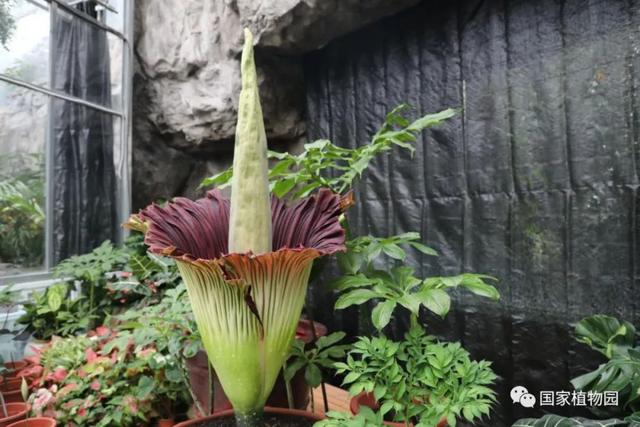
Giant Mogota Blossom
In Sumatra, Western Indonesia, the legend of "food flowers" has been circulating. In the depths of the dense forest, a huge plant grows, it will emit a confusing smell to attract people next to it, and then swallow it into the stomach. The purple -red blood is soaked in the leaves, and the breath of meat floats. Miles ... (Xiaobian can't make it anymore)
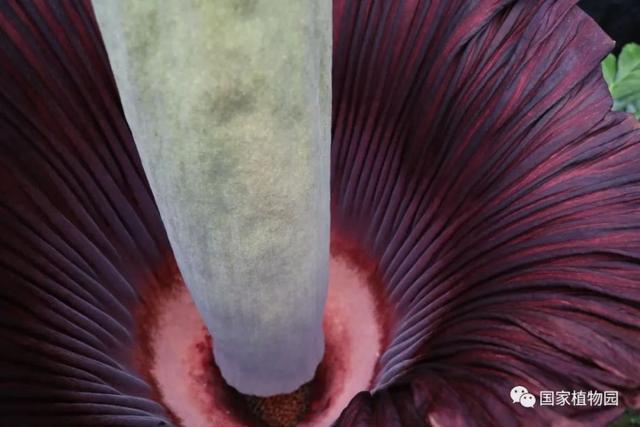
This legendary "Flower Flower" is the rare and endangered plant that we want to introduce today -giant konjac.
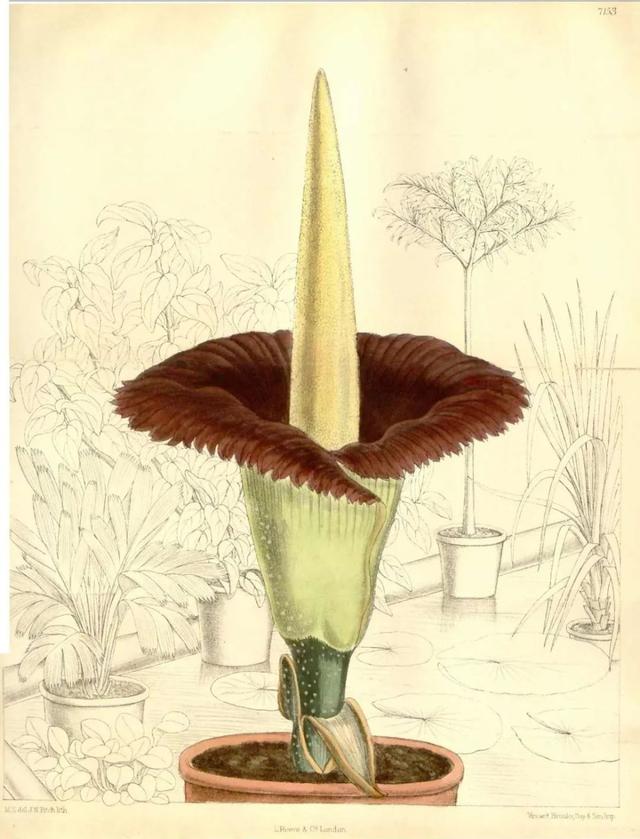
On July 19, in the greenhouse of the National Botanical Garden (North Park), a giant tomb was blooming, and next to it, the other giant tombot was already budding. This is the second giant tombot that the National Botanical Garden has blossomed recently.
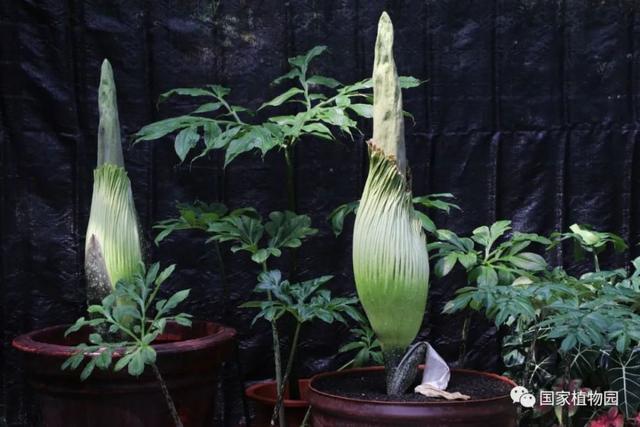
The blooming giant brings and the first giant konjac that bloomed on July 6, and the third giant gramacolus that was about to bloom, formed the world for the first time, and the giant tombot groups in the state of artificial cultivation bloom. On the occasion of the three months of the National Botanical Garden, the bloom of giant tombot groups reflect the superb level of the national botanical garden in the protection, scientific research, and cultivation and maintenance of the national botanical garden.
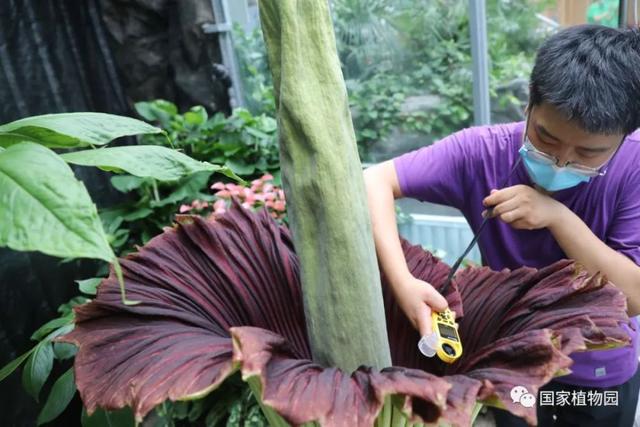
The staff measures the temperature for giant gramacolus
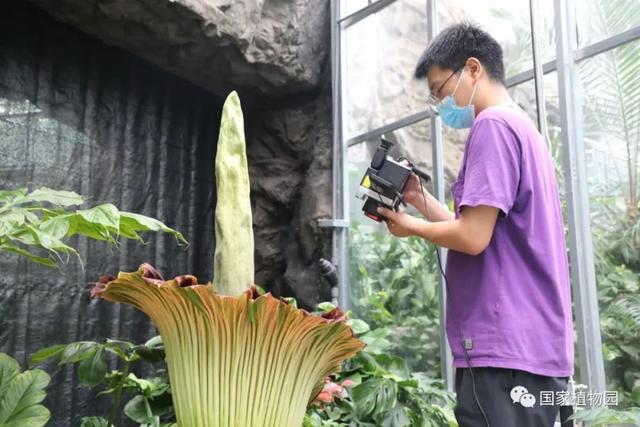
Staff uses hot imaging equipment to shoot
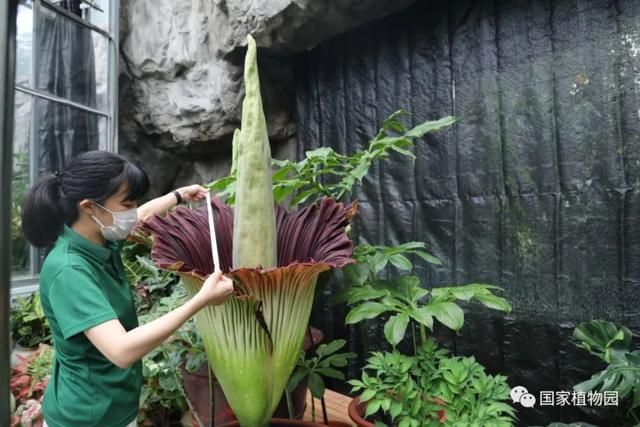
Staff measured the width of the flame buds
First of all, the statement is not eaten. Then why is it legendary as a "food flower"? This also starts with its biological characteristics. The giant tomb is tall. Although the giant tomb is a herb, it has the largest inflorescence in the world. Now it is known that the highest inflorescence is more than 3 meters, which is higher than ordinary houses. Around the ears of the meat, the purple -red Buddha flame buds are like a inverted chimney to protect the inflorescence in the center.


When blooming, the giant tomb will release its own synthesis. It contains more than 100 kinds of chemical gas. The main ingredients are hydrocarbon compounds and sulfides, so it will emit a smell of meat. At the same time, the giant konjac will heat up, and the inflorescence temperature continues to be about 36 degrees Celsius, which is close to our body temperature. Whether it is the smell, color, or temperature of the carrion, it is simulated by the giant tomato itself. And it is not to scare people, but to survive. Due to the huge flowers of giant tomatoes, it is also very consuming nutrients, so its flowering period is only 48 hours. In the depths of Sumatrami's forests, there are many insects such as flies, rotten beetles, and some small -scale rotten animals. All this is simulated by the giant tomato to attract these insects and animals to spread powder for it. From here we can also see the wisdom of the giant konjac. We can see at the scene that there are already many flies that can't help the temptation of giant konjac, and we have begun to dance around it.

Giant Koba temperature monitoring
Although we saw the sarches and buds of the giant tomb taro, the real flower of the giant tombot was at the base of the inflorescence axis, which was completely blocked by the buds of the Buddha flames. There are more than 500 female flowers and more than 2,000 male flowers. Researchers in the National Botanical Garden took the shot of giant tombotia powder out of the giant tombobal group, and will also be announced for the first time by video.

The internal structure of the buds of Buddha flames

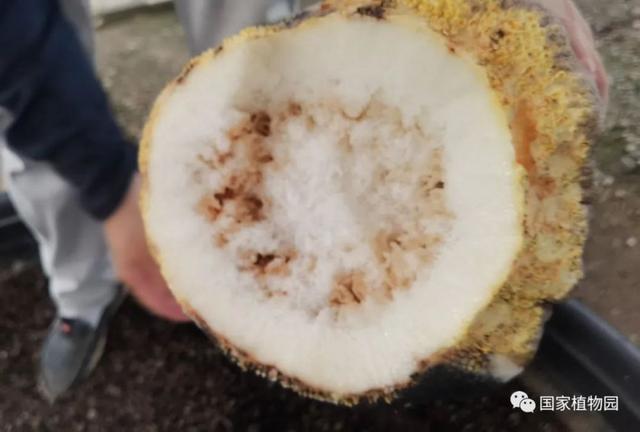

Male flower
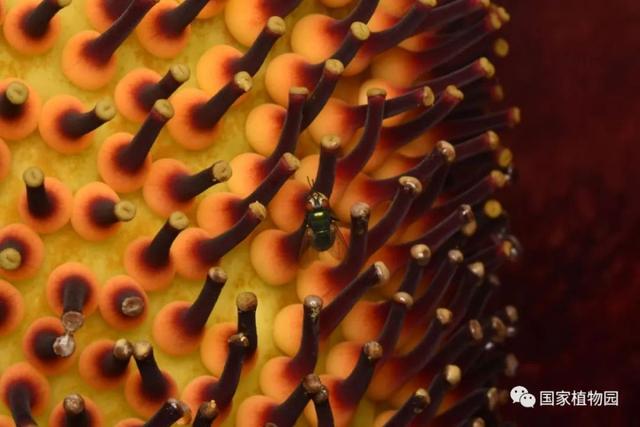
female flower

Giant Koba pollen
Research on the cultivation of konjac is of great significance to the national botanical garden. Giant Mogota is a rare endangered plant. The International Nature Conservation Alliance (IUCN) has listed giant tomatoes as a critical species in the 1997 -endangered species. Due to human demand for palm products and wood, the tropical rain forests in Sumatra are greatly damaged. According to incomplete statistics, Indonesia has lost 72%of the primitive tropical rain forests, and the situation is still deteriorating, resulting in the original habitat of giant tomatoes directly damaged. Learning and reproduction mechanisms, find ways to increase the number of it. At the same time, giant tomatoes also have high scientific research and economic value. The giant stems contain a large amount of gifta glycogen, which is one of the best soluble dietary fibers currently discovered. Multiple areas. Researchers in the National Botanical Garden are studying how to hybridize giant konjacs with valuable konjacs, and cultivate new konjac varieties.
- END -
Taishan Meteorological Observatory issued a red warning of heavy rain [Class/particularly serious]
Taishan Meteorological Observatory upgraded the orange warning signal of heavy rain orange warning signals to red to red at 06:40, June 08, 2022.
Carry out the human settlement environment improvement and enhance the masses' happiness index | Dongying released

In order to further improve the quality of life of the people, enhance the happine...